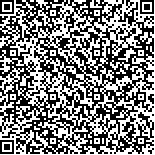下载中心
优秀审稿专家
优秀论文
相关链接
摘要

高分辨率卫星的幅宽一般很小,受云雨和轨道回访周期影响,单颗卫星的短时段内覆盖能力有限,因此,单一高分辨率卫星常常无法满足一定时段内的黑臭水体监测需求,需要多源卫星协同监测黑臭水体。为了分析多源高分辨率影像对黑臭水体遥感监测的适用性,本文基于地物光谱仪实测的水体遥感反射率数据,以GeoEye-1、WorldView-2、北京二号(DMC3)、高景一号SV1(SuperView-1)以及GF-PMS系列(GF-1/1B/1C/1D、GF-2、GF-6)传感器波段进行等效计算,结果表明:(1)采用反射率比值模型——BOI(Black and Odorous water Index)模型,GeoEye-1、WorldView-2、SuperView-1和GF-1/1B/1C/1D/2/6影像识别黑臭水体正确率均较高,分别为89.5%、89.5%、92.1%和92.1%。(2)BOI模型不适用于DMC3,这里采用了归一化水体指数NDWI≤0.55判别黑臭水体,识别正确率为89.5%。(3)BOI模型应用于仅有的2景同步卫星影像——GF-2影像,经实测数据验证,识别精度为83.3%,精度较高。针对通州区内的某重叠区,2016年—2021年10颗多源卫星影像协同观测的结果一致性较好,表明了多源遥感影像监测黑臭水体的适用性较好。综合考虑卫星影像空间分辨率和采购成本,给出了合理的协同观测建议。
The width of high-resolution satellite is generally very small. Affected by cloud and rain and orbital return visit cycle, the coverage capacity of a single satellite is limited in a short period of time. Therefore, A single high-resolution satellite is often unable to meet the needs of black and odorous water monitoring in a certain period of time, and multi-source satellites are needed to monitor black and odorous water. In order to analyze the applicability of multi-source high-resolution image to the remote sensing monitoring of black and odorous water, based on the water remote sensing reflectance data measured by the surface object spectrometer, the equivalent calculation was carried out with GeoEye-1, WorldView-2,DMC3, SuperView-1 (SV1) and GF-PMS series (GF-1/1B/1C/1D, GF-2, GF-6) sensor bands.Take the multi-source sensor remote sensing images as the research object. First compared the GeoEye-1, WorldView-2, DMC3, SuperView (SV1) and GF-PMS series (GF-1/1B/1C/1D, GF-2, GF-6) image spatial resolution, spectral response function, and band Settings; then, based on the BOI (Black and Odorous Water Index) recognition model, the applicability of multi-source sensor image monitoring is analyzed with the same threshold value, and a new model is proposed for DMC3 which is not suitable for BOI model, and the high-quality multi-source images are selected and applied; Finally, some suggestions are put forward for cooperative monitoring of black and smelly water with multi-source sensor remote sensing image.The research results show that: (1) It is found that GeoEye-1, WorldView-2, SuperView-1 and GF-1/1B/1C/1D/2/6 images can use the same threshold for black and odorous water Monitoring, with good identification accuracy; The normalized differential water body index (NDWI) for DMC3 can effectively identify the general water body and the black and smelly water body. (2) High quality multi-source images were selected with the threshold of BOI=0.05 and NDWI=0.55 for the application of black and smelly water monitoring. It was found that the collaboration of multi-source remote sensing images could provide continuous supervision for river water quality monitoring. (3) In the process of black smelly water monitoring, comprehensive consider price and spatial resolution image, when the river width in 2—10 meters, select GF-2, SV1 or DMC3 image as a conventional remote sensing image, GeoEye-1, WorldView-2 images as a supplement; When most of the river width is more than 10 meters, GF-1 or GF-6 images are selected as conventional remote sensing images, and the supplementary data sources are GF-2, SV1, DMC3, GF-1B/1C/1D, Geoeye-1, and WorldView-2 images, respectively.

